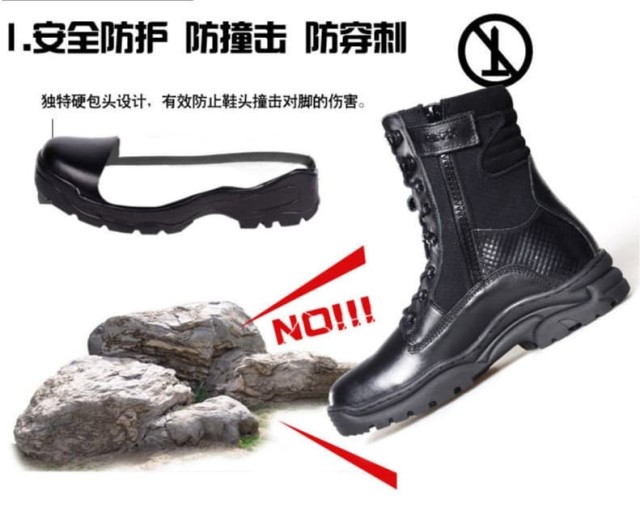Finding work shoes that deliver occupational protection without sacrificing comfort or personal aesthetics is a common challenge. This guide breaks down the science behind professional footwear selection, helping you identify designs that align with your job demands while supporting long-term foot health.
Ergonomic Foundations of Professional Footwear
Quality work shoes begin with biomechanically sound construction. Research shows improper footwear contributes to over 40% of occupational foot injuries annually. The right pair should function as protective equipment while mimicking natural foot movement.
Material Engineering for Sector-Specific Support
- Electrical Hazard Protection: Shoes for electricians incorporate non-conductive materials that can withstand extreme voltages (up to 18,000 volts for one minute), as referenced in ASTM standards.
- Slip Resistance: Restaurant workers need outsoles with microscopic grooves that channel liquids away, reducing fall risks by approximately 30% compared to smooth soles.
- Puncture Resistance: Construction boots integrate midsole plates that stop sharp objects while maintaining flexibility.
Last Shapes and Weight Distribution Science
The shoe "last" (foot-shaped mold) determines:
- Arch Alignment: Contoured footbeds reduce fatigue during prolonged standing
- Toe Box Space: Wider fronts prevent bunions without compromising stability
- Heel Counter Rigidity: Balanced stiffness prevents ankle rolls during lateral movements
Pro Tip: Test shoes at day's end when feet are naturally swollen for accurate fit assessment.
Style Archetypes with Functional Purpose
Modern work footwear proves safety and style aren’t mutually exclusive. Designers now integrate protective features into visually appealing profiles.
Heritage Work Boots vs. Modern Minimalist Designs
| Feature | Classic Work Boots | Contemporary Styles |
|---|---|---|
| Aesthetics | Rugged, heavyweight appearance | Sleek silhouettes |
| Best For | Outdoor construction | Healthcare/creative workplaces |
| Key Benefit | Maximum impact protection | Lightweight flexibility |
Color & Texture Choices with Practical Benefits
- Dark Tones: Camouflage scuffs in manufacturing environments
- Textured Leather: Hides creasing better than smooth finishes
- Anti-Microbial Linings: Reduce odor in breathable mesh designs
Have you noticed how certain materials feel hotter/cooler depending on your work environment?
Occupation-Tailored Fitting Strategies
Hazardous Environment Fit Lock Technologies
Workers in oil/gas or welding need:
- Metatarsal Guards: External shields that deflect falling objects
- Speed Lacing Systems: Enable quick donning with secure lockdown
- Insulated Tongues: Prevent sparks from entering shoe interiors
All-Day Standing vs. Mobile Work Posture Solutions
| Work Type | Shoe Priority | 3515 Recommendation |
|---|---|---|
| Static Standing | Cushioning (≥20mm EVA midsoles) | Nurse clogs with rocker soles |
| Active Movement | Flexibility (30°+ forefoot bend) | Lightweight composite toe shoes |
Step Into Better Workdays with 3515 Footwear
For distributors and brand owners seeking reliable work footwear manufacturing, 3515 combines advanced safety engineering with style-conscious designs. Our production capabilities deliver:
✓ Custom Safety Standards Compliance – From electrical hazard to slip-resistant soles
✓ Bulk Order Efficiency – Consistent quality across large-scale production runs
✓ Trend-Responsive Designs – Updated silhouettes matching urban workwear trends
Your workforce deserves shoes that protect as well as they perform—let’s build them together.
Products You Might Be Looking For:
Explore customizable safety footwear for work and protection
Related Products
- Durable Leather Work Boots for Wholesale & Custom OEM Manufacturing
- Wholesale Customizable Suede Safety Boots - Puncture-Proof with Velcro Closure
- Puncture-Resistant Velcro Safety Boots for Wholesale & Custom Manufacturing
- Customizable Anti-Smash Safety Boots for Wholesale & Private Label Manufacturing
- Durable Leather Moc Toe Work Boots for Wholesale & Custom Manufacturing
Related Articles
- How Men's Work Shoes Solve Industry-Specific Safety Challenges
- How Lace-Up Work Boots Solve Workplace Safety Challenges
- Why Goodyear Welt Construction is a Lifetime Investment in Footwear
- How Job-Specific Work Boot Designs Enhance Safety and Efficiency
- How to Match Workplace Hazards to Safety Features in Work Shoes: A Risk-Based Selection Guide



















